Don’t Let Your Arch Collapse: Picking the Perfect Climbing Plant
I’ve been designing gardens for a long time, and I’ve seen the incredible magic that happens when the right plant meets the right structure. A plain wooden arch can become a fragrant, flower-draped gateway. An empty pergola transforms into a lush, shaded outdoor room. It’s a beautiful thing.
In this article
But I’ve also seen the disasters. I once consulted on a project where a gorgeous, heavy-duty cedar pergola was literally being torn apart. The culprit? A wisteria that had been planted about a decade earlier. Its woody, python-like stems had twisted and thickened so much that they were actually breaking the 6×6 posts. It was a heart-breaking and expensive lesson for the homeowner about the raw power hiding inside some of these vines.
So, let’s get this straight: choosing a climbing plant isn’t just about picking pretty flowers. It’s a long-term commitment. You’re matchmaking a plant and a structure, and you need to think about strength, sunlight, your climate, and frankly, how much time you really want to spend pruning on a ladder. This guide is all about helping you make the right choice from the get-go.
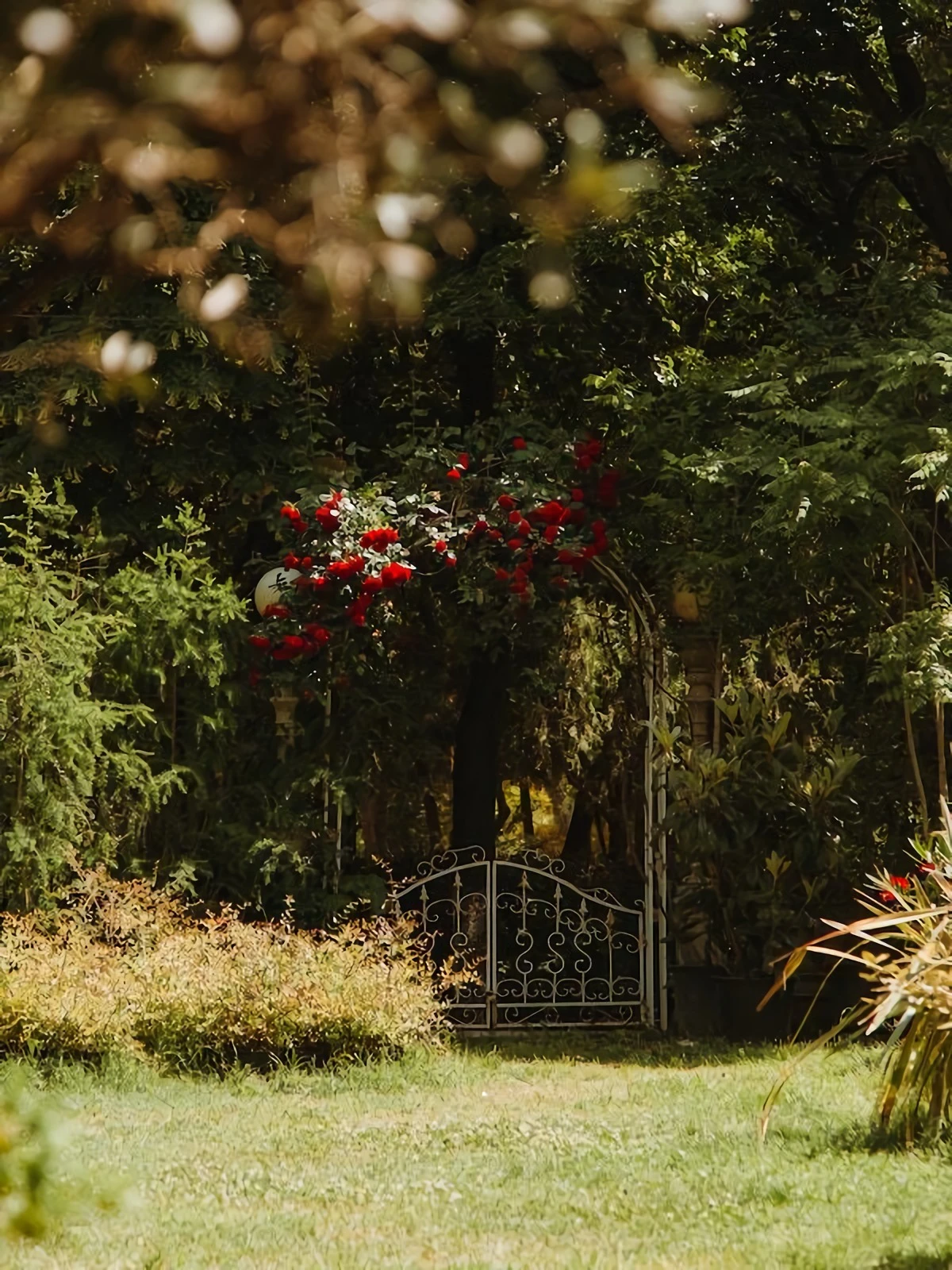
First Things First: Know Your Structure
Before you even browse the plant nursery, take a hard look at your arch, trellis, or pergola. What’s it made of? How solid is it? The answers to these questions will immediately narrow down your plant options. A mature vine is surprisingly heavy, especially after a rainstorm or under a dusting of snow, and it can catch the wind like a giant sail.
Lightweight Metal Arches: You see these everywhere, often for between $50 and $150 at big-box stores. They’re great for annual climbers like morning glories or sweet peas. You can also get away with using less aggressive perennials on them. A quick tip: They’re perfect for Group 3 clematis like the classic purple ‘Jackmanii’ or ‘Polish Spirit’ because these types are lighter and you cut them back nearly to the ground each year, so they never build up that heavy, woody weight. But please, don’t even think about putting a wisteria or a big climbing rose on one of these. I’ve seen them buckle and collapse in just a few seasons.
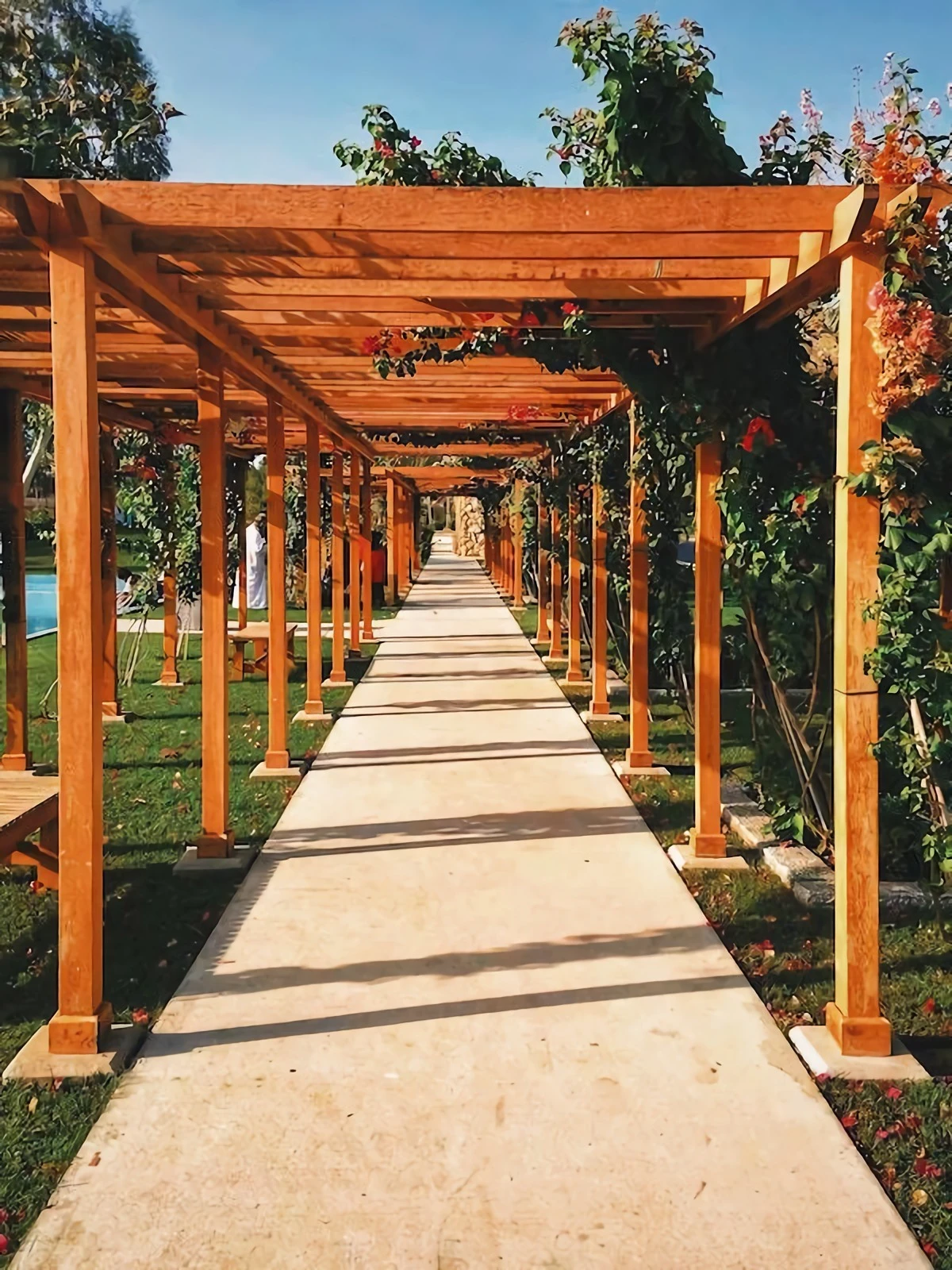
Wooden Structures: Wood gives you that classic garden look and can offer fantastic support. The key is the size of the lumber. For a big pergola that’s going to hold a serious vine, you want posts that are at least 4×4, but honestly, 6×6 is what the pros use for peace of mind. Make sure those posts are properly set in concrete below the frost line for stability. As for wood type, pressure-treated pine is the budget option, but cedar or redwood will resist rot for much, much longer. A simple, sturdy wooden arch might cost you $300-$600, while a full pergola is a bigger investment, often starting in the low thousands.
Vinyl or Composite Structures: The big draw here is low maintenance—no rotting, no painting. The downside? Their surfaces are often slick, making it tough for some vines to get a good grip. They also just don’t have the brute strength of a thick wooden beam. They’re best for lighter vines that you can help along with ties, like most clematis or the less thuggish varieties of honeysuckle.
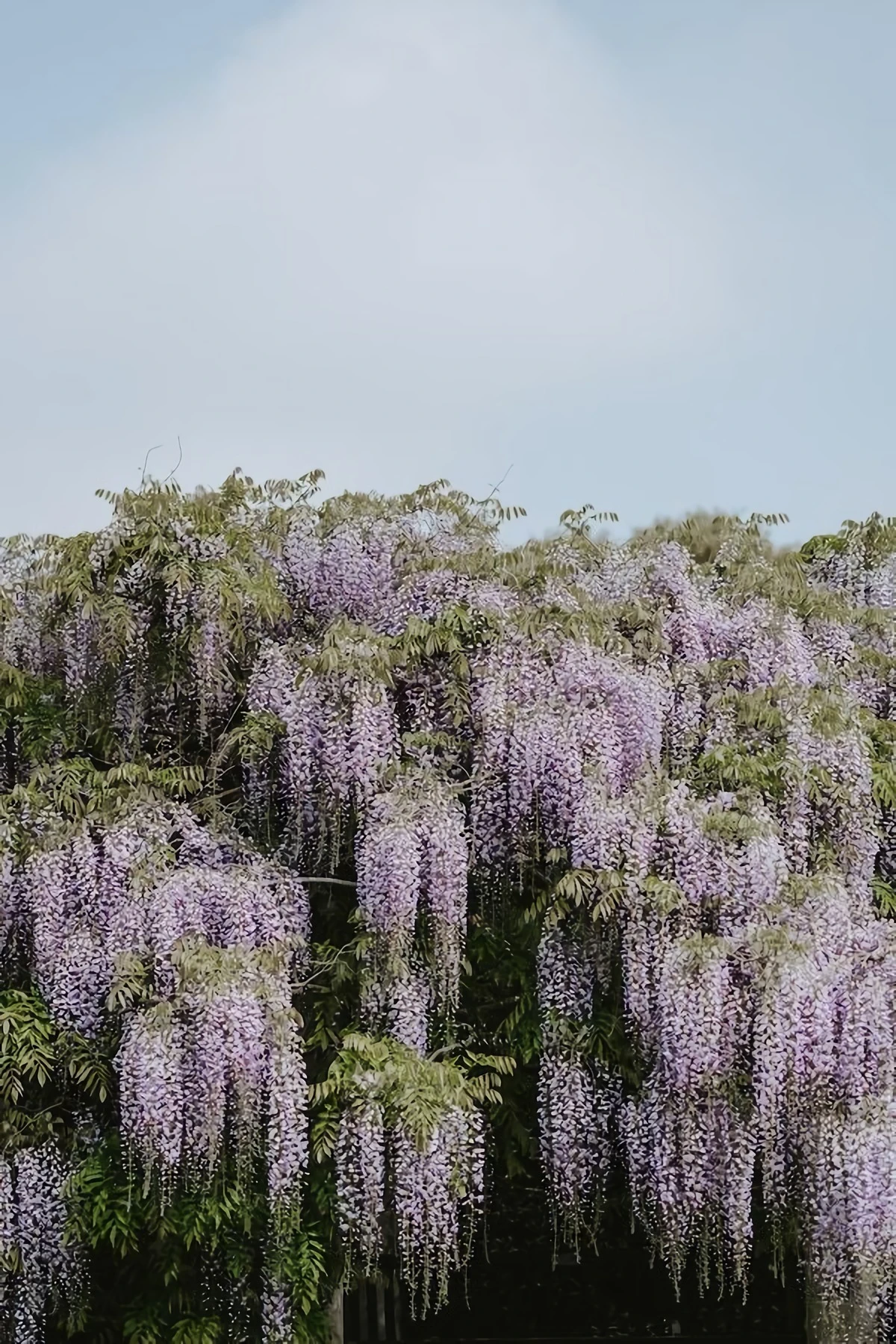
Oh yeah, and don’t forget your site conditions! Most of the big-flowering climbers like roses and wisteria need at least 6 hours of direct sun to perform. A climbing hydrangea, on the other hand, is your go-to for a shadier spot. And the soil? Most climbers hate wet feet. Good drainage is non-negotiable. A good rule of thumb I always follow is to dig a hole twice as wide as the plant’s pot and mix in a generous amount of compost. You’re aiming for a mix that’s roughly one-third compost to two-thirds native soil, giving the roots a nice, easy start.
The Plants: My Honest Take on the Best Climbers
Alright, now for the fun part. Here are my thoughts on the most popular climbers, including the good, the bad, and the downright destructive.
Wisteria: The Magnificent Beast
Nothing, and I mean nothing, puts on a show like a wisteria in full bloom. It’s a breathtaking curtain of color and fragrance. But this plant is a beast and demands your respect. It is, without a doubt, the strongest and most potentially destructive vine you can grow.
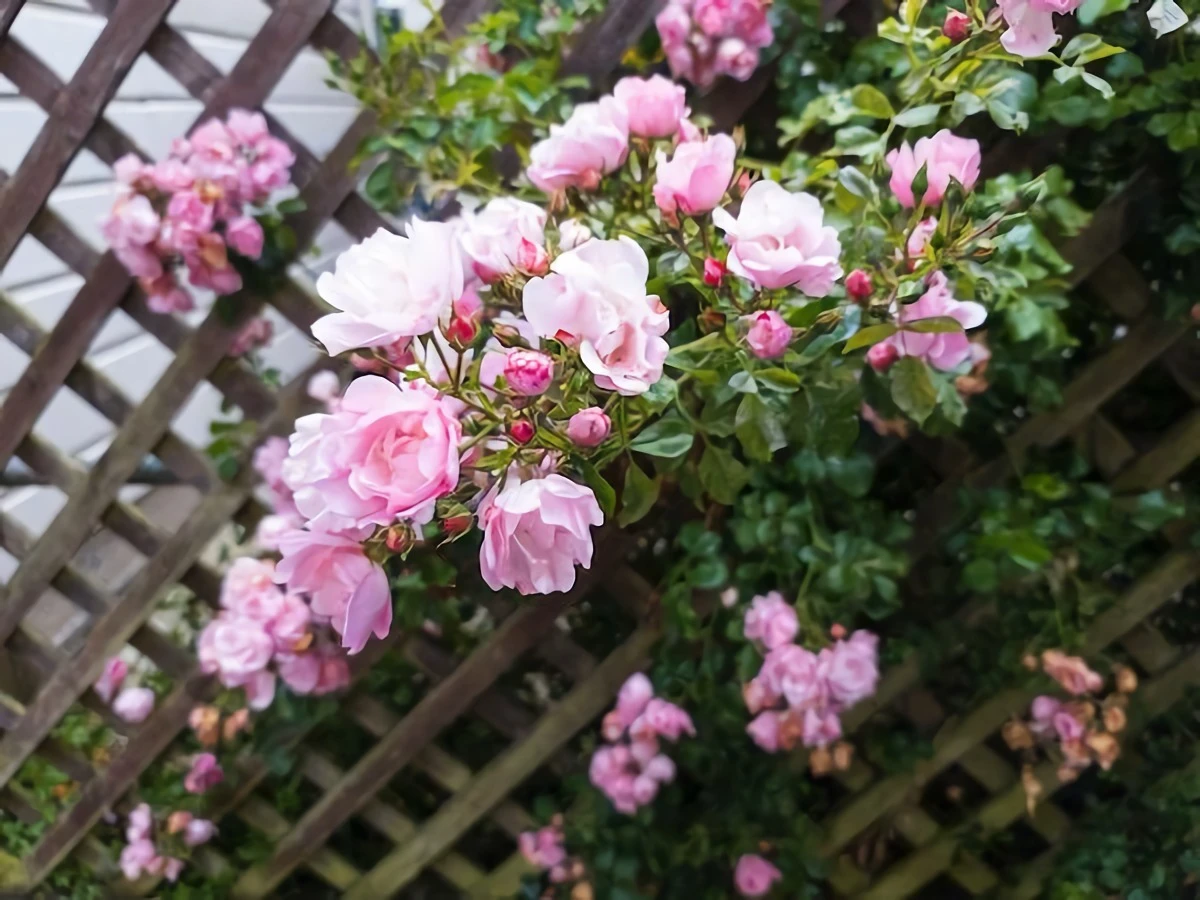
Heads up! Wisteria needs a massive, professionally installed structure. We’re talking those 6×6 posts or heavy-gauge steel. It will crush flimsy arches, rip gutters off your house, and tear up siding. Never, ever plant it right against your house. A freestanding, super-sturdy pergola is its ideal home. For a less aggressive option, look for the American species of wisteria. Its flowers are a bit smaller, but it’s much more manageable for a typical garden setting.
A common complaint is that wisteria won’t bloom. The secret is aggressive pruning, twice a year. In late winter, you establish your main framework and cut all the side shoots back to just 2 or 3 buds. Then, in mid-summer, you chop back all the long, leafy green shoots of the season. This tells the plant to stop growing and start making flower buds for next year. And be prepared to wait; a good grafted plant from a nursery (which might cost $50-$100+) can still take a few years to start flowering.
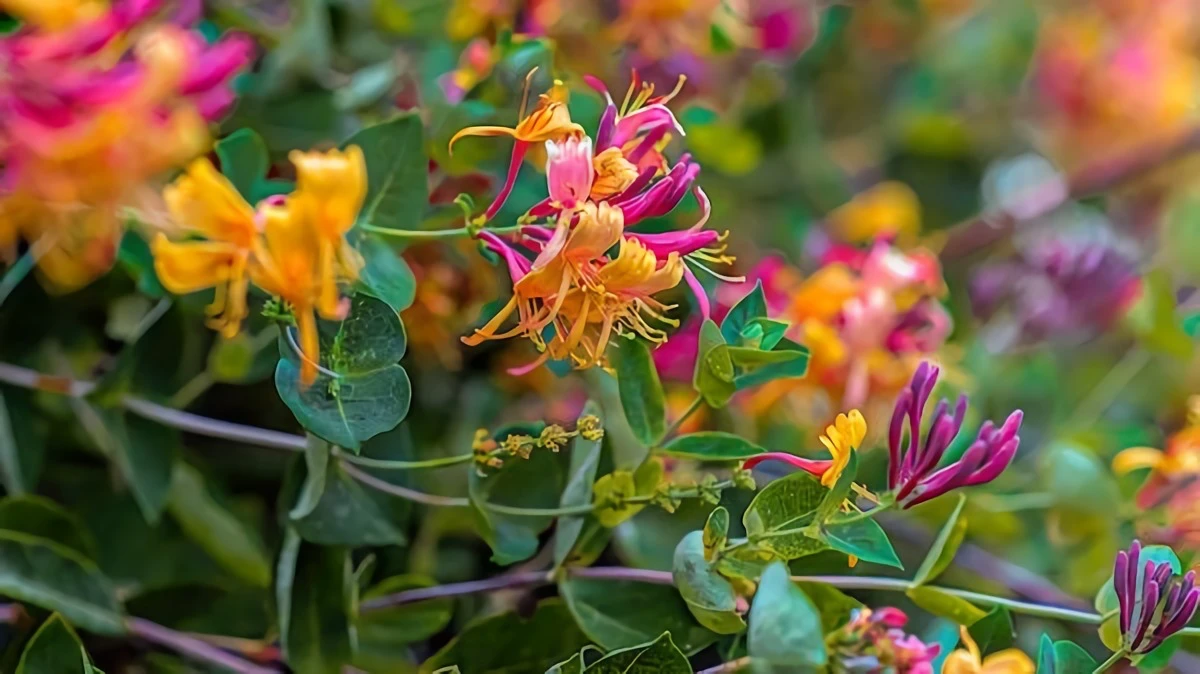
Climbing Roses: Romantic but High-Maintenance
A rose-covered arch is a garden fantasy for a reason. It’s stunning. But climbing roses are a labor of love; they need regular attention to look good. A good quality plant will likely run you between $30 and $60 from a specialty nursery.
It’s good to know the difference between a ‘climber’ and a ‘rambler.’ Ramblers are monsters that have one huge bloom period and can cover a barn. Climbers are a bit more restrained and often repeat-bloom all summer. The real pro tip for getting tons of flowers is to train the main canes as horizontally as possible. A cane growing straight up will only flower at the top. But if you bend it sideways and tie it down, it will send up flowering shoots all along its length. It’s a game-changer.
Here’s a quick guide to training them: 1. Gently bend a long, flexible cane down toward a horizontal position on your arch or trellis. 2. Use a soft, stretchy tie (I like using velcro plant tape, which you can get for about $8 a roll) to attach the cane to the support every 18 inches or so. Don’t use wire, which will strangle the cane as it thickens. 3. The following spring, you’ll be rewarded with vertical shoots popping up all along that horizontal cane, each one covered in buds!
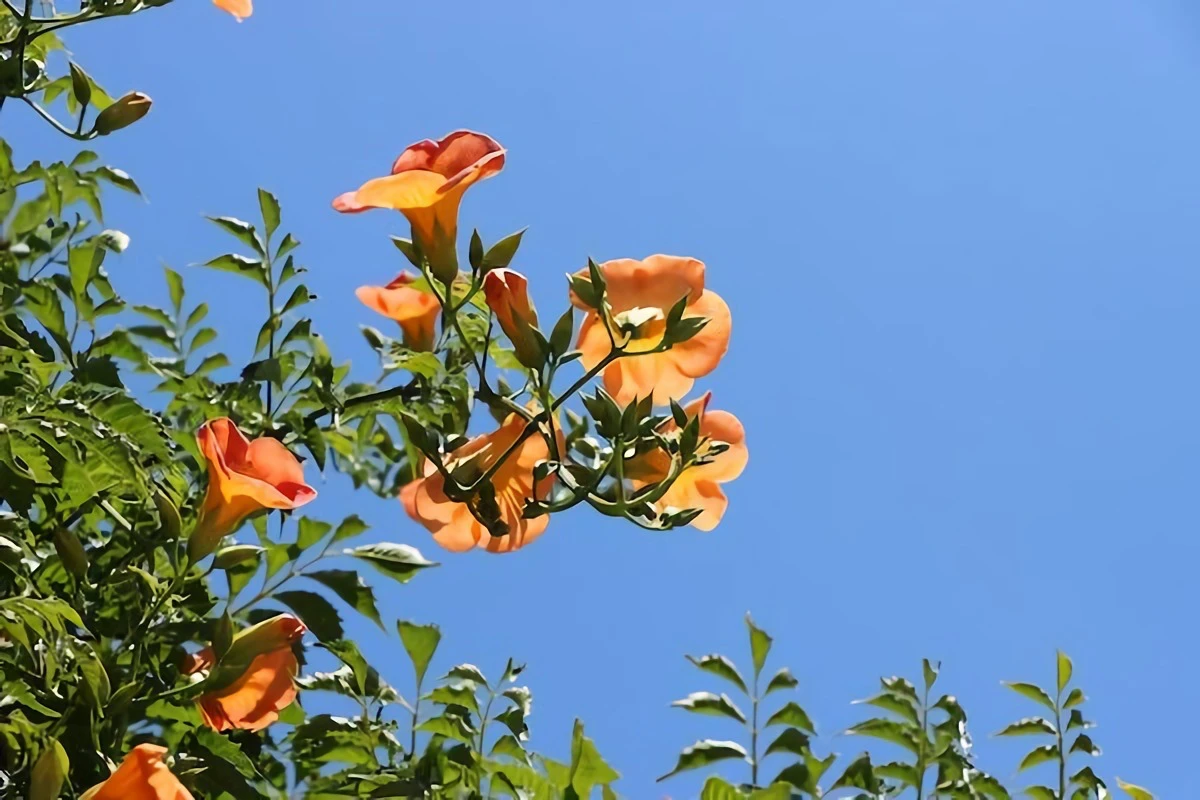
But be warned: Roses need full sun and good airflow to prevent fungal diseases. You’ll be pruning, deadheading, and keeping an eye out for pests. They’re worth it, but they aren’t ‘plant-and-forget’.
Clematis: The Queen of the Vines
Clematis is fantastic. With so many varieties, there’s one for nearly every situation. They’re lightweight and play well with others, making them the perfect partner to grow up through a climbing rose. A common variety might cost you $25-$35.
The most important thing to know is the pruning group, because it’s where everyone messes up. Here’s the simple breakdown:
- Group 1 – The Early Bloomers: These bloom in early spring on last year’s wood. You only prune them after they flower, just to tidy them up. If you prune them in winter, you cut off all the flowers. Think of the super-vigorous montana types that can cover a pergola fast.
- Group 2 – The Big Hybrids: These have huge, showy flowers in late spring/early summer on old wood, and sometimes a smaller flush later on new wood. They just need a light trim in late winter to remove dead stems and shape them up.
- Group 3 – The Summer Bloomers: These are the easiest! They bloom on the new growth they produce each summer. In late winter, you just whack the whole thing back to about 12 inches from the ground. The famous ‘Jackmanii’ is in this group, which is why it’s so beginner-friendly.
There’s an old saying: “cool feet, sunny head.” Clematis likes its roots shaded, so plant a small perennial at its base or lay a flat stone over the root zone to keep things cool while the vine grows up into the sun.
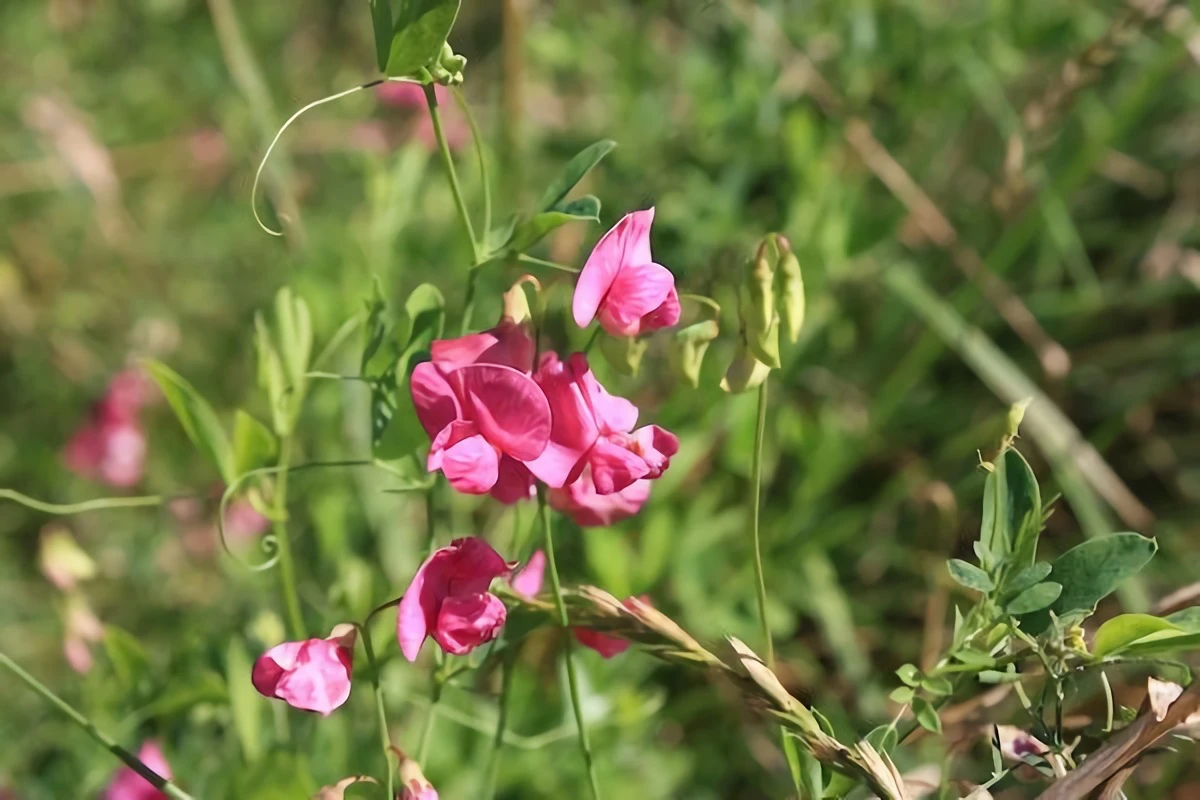
Trumpet Vine: Use With Extreme Caution
This vine is a powerhouse with gorgeous, tropical-looking orange flowers that hummingbirds adore. It’s also tough as nails. But I rarely recommend it, and when I do, it comes with a serious warning label.
To be frank, this plant is a menace. It’s incredibly aggressive. It climbs with aerial rootlets that damage mortar and wood, and it spreads relentlessly with underground runners. Plant one, and you’ll soon find it popping up 15 feet away in your lawn and your neighbor’s flower beds. It’s nearly impossible to get rid of. If you absolutely must have that look, consider a much better-behaved native alternative like Coral Honeysuckle (Lonicera sempervirens) or even Maypop (Passiflora incarnata). They give you beautiful, unique flowers that attract hummingbirds without the garden-takeover drama.
Climbing Hydrangea: The Shade-Loving Star
For a shady wall or sturdy trellis, this is the best choice, hands down. It has beautiful white lacecap flowers, great fall color, and interesting peeling bark in the winter. But it requires patience. It’s a more expensive vine, often $40-$80 for a decent plant, because it’s slow to get going.
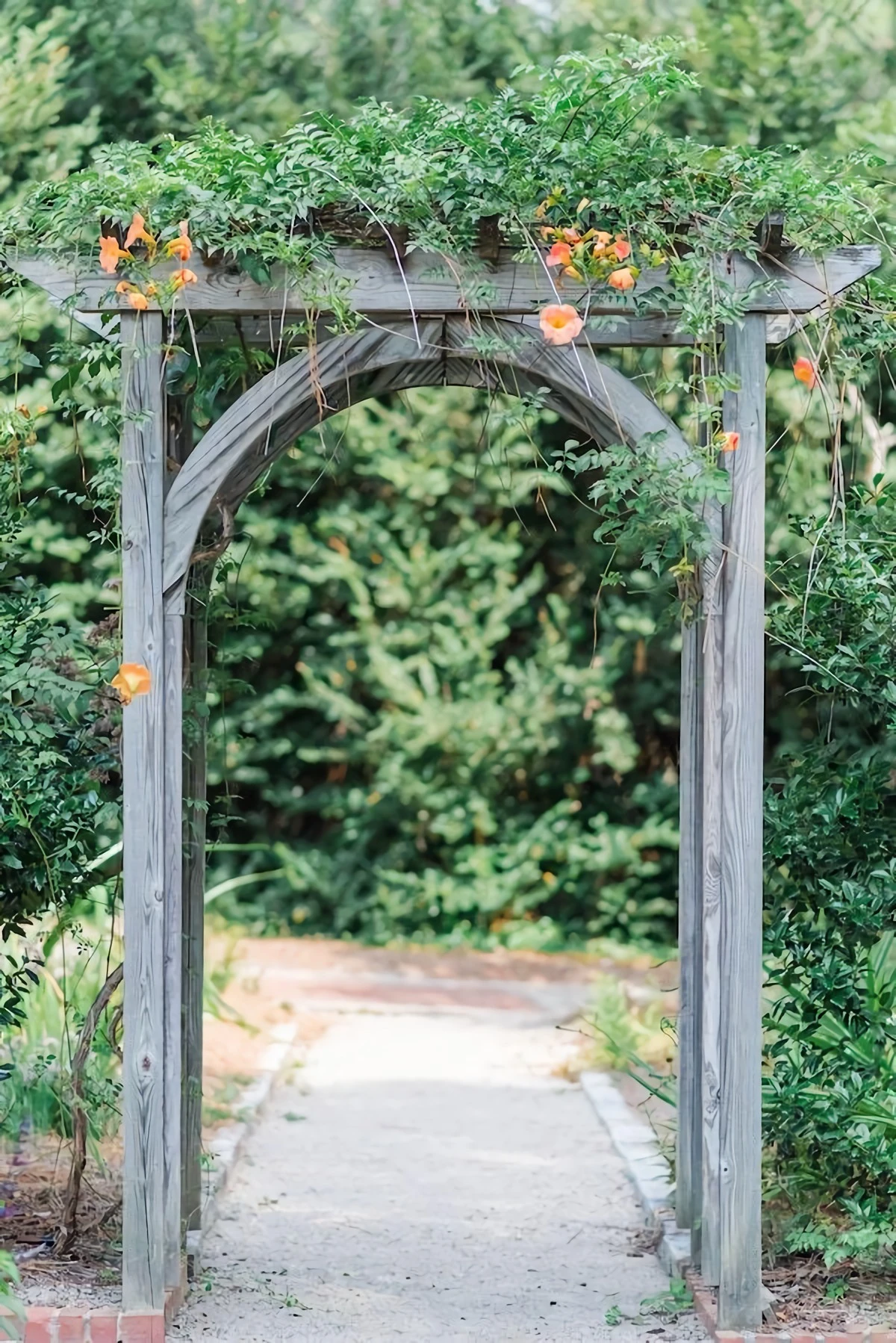
I always tell people the gardener’s mantra for this one: “First year it sleeps, second year it creeps, third year it leaps.” It spends a couple of years building a massive root system before you see much action up top. Don’t give up on it! It’s worth the wait. Just be aware that it clings with adhesive rootlets, so it’s best on solid masonry, not a painted wall you care about.
Putting It All Together: A Classic Project Idea
Feeling inspired but not sure where to start? Let’s imagine you want that timeless rose-and-clematis-covered arch. You’d start with a solid wooden arch (budget around $300-$600). Then, you’d pick a reliable climbing rose (about $40) and a Group 3 clematis like ‘Jackmanii’ (about $30). Add a bag of compost ($10) and some stretchy plant ties ($8), and you’re looking at a total startup cost of roughly $390 to $690 for a stunning garden feature that will bring you joy for decades.
By the way, if you need to cover an ugly fence this summer while you decide on a permanent vine, here’s a quick win. Grab a couple packets of annual Morning Glory or Spanish Flag seeds for less than $5. You’ll get a temporary, lightweight, and surprisingly beautiful screen in just a few months!
Choosing the right climber is about thinking five, ten, even twenty years down the road. By matching the plant’s personality to your structure, you’re not just planting a vine—you’re building a living, breathing piece of architecture. It’s an investment that pays you back every single time you walk underneath it.
Inspirational Gallery with Photos
A single, mature wisteria vine can exert over 2,000 pounds of pressure and weigh more than a small car.
This staggering weight explains why flimsy structures fail. When choosing a vigorous woody vine like wisteria or trumpet vine (Campsis radicans), you aren’t just buying a plant; you’re planning for a significant structural load that will develop over decades. Your pergola or arch must be built with the same permanence in mind.
Can I really grow two different climbers on the same arch?
Absolutely, and it’s a fantastic way to extend the season of interest! The key is to pair plants with different habits. A classic combination is a climbing rose with a late-flowering clematis, like ‘Etoile Violette’. The clematis uses the rose’s thorny structure for support without strangling it. Since this type of clematis is pruned back hard each spring, it never gets heavy enough to damage its partner.
Don’t forget the sensory details. For an arch near a seating area or entryway, think about fragrance that comes alive after dusk. While many jasmines are famed for their scent, the common summer jasmine, Jasminum officinale, releases its sweet, intoxicating perfume most powerfully in the evening, creating a magical atmosphere for summer nights.
- Soft, flexible plant ties (like Velcro One-Wrap for Gardens).
- Natural jute or garden twine for lighter, annual vines.
- A good pair of bypass pruners, such as Felco F-2s.
- Durable gardening gloves to protect from thorns and sap.
The secret to a beautiful arch? Having the right tools on hand from day one. Securing your climber gently but firmly as it grows prevents wind damage and encourages it to cover the structure evenly, saving you a major corrective pruning job later.
Passion Fruit Vine (Passiflora edulis): Offers lush, tropical foliage and otherworldly flowers, followed by edible fruit. Needs a very sturdy support and a sunny, sheltered spot. Best for warmer climates or large containers that can be moved indoors.
Grape Vine (Vitis vinifera): A classic choice for pergolas, providing dense summer shade and a harvest. Requires rigorous pruning and spraying to manage growth and prevent disease, but the reward is homegrown grapes.
For a truly productive arch, choose a vine that feeds you as well as your soul.
A common mistake: Planting your new climber directly against the base of the post or trellis. This ‘rain shadow’ position means the roots get very little water, and the lack of air circulation right against the structure encourages fungal diseases like powdery mildew. Instead, plant it about 12-18 inches away and gently angle the young plant towards the support to give it a healthy start.
For a true spectacle, look to the world’s great gardens. The famous Laburnum Arch at Bodnant Garden in Wales is a 180-foot tunnel that drips with golden-yellow, wisteria-like flowers for a few magical weeks in late spring, creating an unforgettable immersive experience.
Not all climbers need help. Self-clinging vines, like Climbing Hydrangea (Hydrangea anomala petiolaris) or Boston Ivy, use adhesive aerial roots to scale walls on their own. While perfect for solid brick or stone, they can be destructive to painted surfaces, siding, or older mortar, pulling away surfaces when removed. For these walls, it’s safer to install a separate wire or wood trellis with stand-off brackets.
For instant gratification on a budget, look no further than annual climbers.
- Sweet Pea (Lathyrus odoratus): Unbeatable for fragrance and cottage-garden charm.
- Black-Eyed Susan Vine (Thunbergia alata): Cheerful orange or yellow flowers that bloom nonstop until frost.
- Morning Glory (Ipomoea purpurea): Effortless and fast, covering a light arch in a single season.
Clematis ‘The President’: Vigorous and reliable, producing a profusion of velvety, deep purple-blue flowers in early summer and often again in the fall. It’s a Group 2 clematis, meaning a light prune after the first flush of flowers is all it needs to keep performing year after year. Perfect for adding a splash of regal color to a wooden arch or obelisk.










